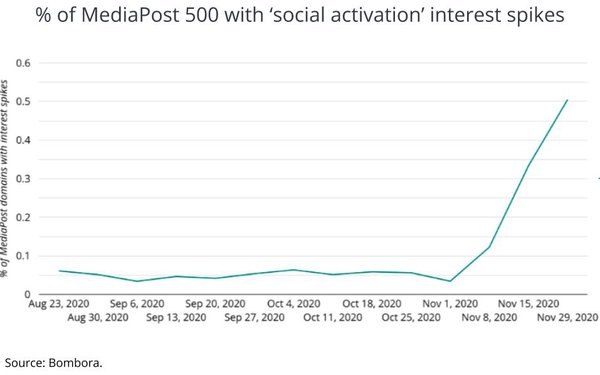
In recent years we have seen social
networks attempt to humanize their online experience by incorporating emotions into their reaction buttons, providing a quick and easy way to express more than just a “Like” on a
post.
In 2020, brands have continued to invest heavily in their online footprint through owned and operated channels. Most, if not all, have taken meaningful steps to reexamine
their company’s mission and values to ensure that they remain in close alignment with their brand perception, customer needs and expectations.
Cultivators of
larger-than-life social-media followings enjoy the many benefits of “social activation,” which occur when highly engaged fans and followers endorse your brand via social media and
word-of-mouth (WOM), likely drawing in new customers in the process.
advertisement
advertisement
The act of turning fans into brand evangelists comes down to an organization’s ability to deliver a
valuable and customized experience. Offering the right experience, in the right place, at the right time not only enhances engagement with current fans but also captures the attention of new
ones.
Intent data for “native advertising” has been consistently rising since August, as measured by Bombora, amid ongoing efforts to provide more seamless, streamlined,
and responsive customer experiences in a highly saturated digital space.
When COVID-19 struck, companies pulled back on digital advertising spend – including what would
have gone to branded content and native advertising – giving marketers an opportunity to rethink their approach to content.
Branded content has since rebounded at record
levels and remains extremely effective. What’s different, though, is how B2B companies are executing it. This could explain why, according to MediaRadar, the top 100 advertisers increased native programmatic spending by 10% (YoY).
As we consider the various tactics
companies are employing around customer advocacy and sponsored content, we’ve also seen an uptick in intent data around “brand ambassadors.”
Generally
speaking, engaging an influencer or celebrity to portray your brand in a positive light is still highly sought after – even in 2020 – when a shift in consumer sentiment has caused people
to care more about things like brand authenticity and reputation, product quality, and price.
To effectively carry out a brand ambassador program that is beneficial for both
parties, it’s critical that ambassadors share the same values and support the philosophy of a chosen brand.
Due to their ability to influence brand perception and
people’s decisions, brand ambassadors can be another powerful source of positive WOM marketing, exerting their influence to turn skeptical buyers into true believers.